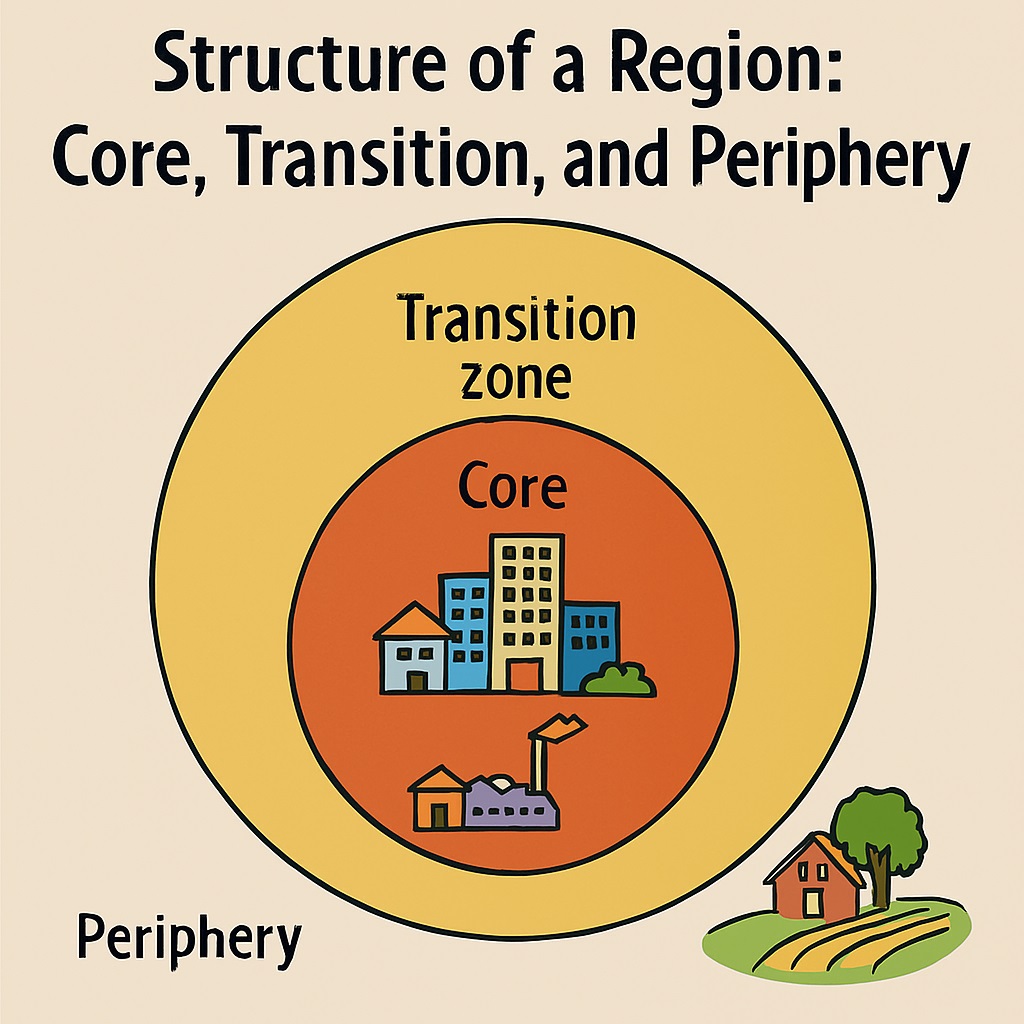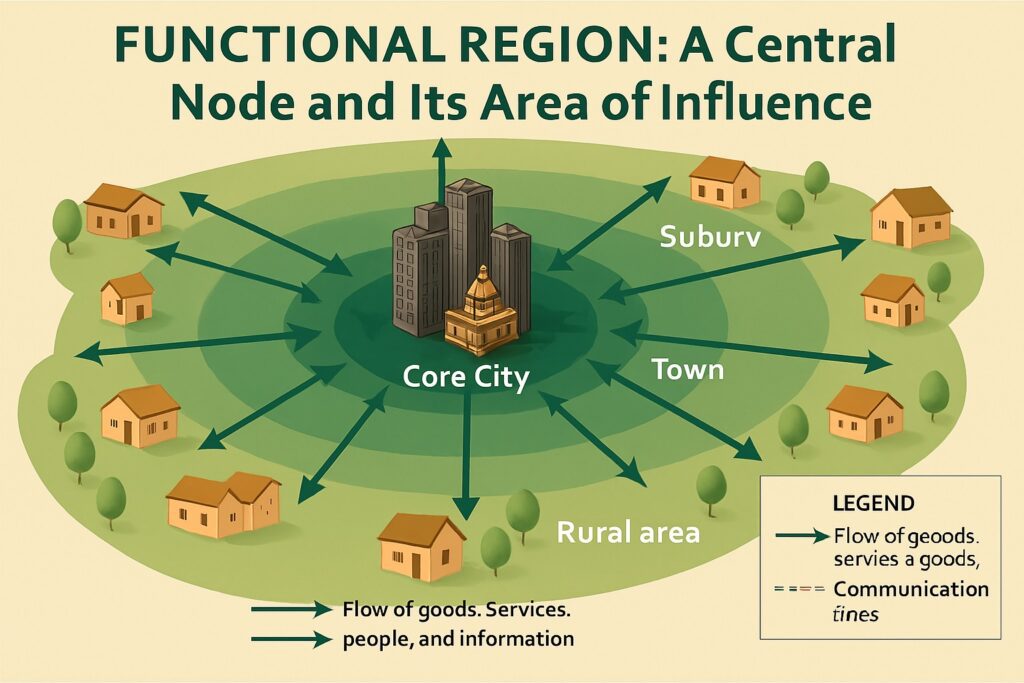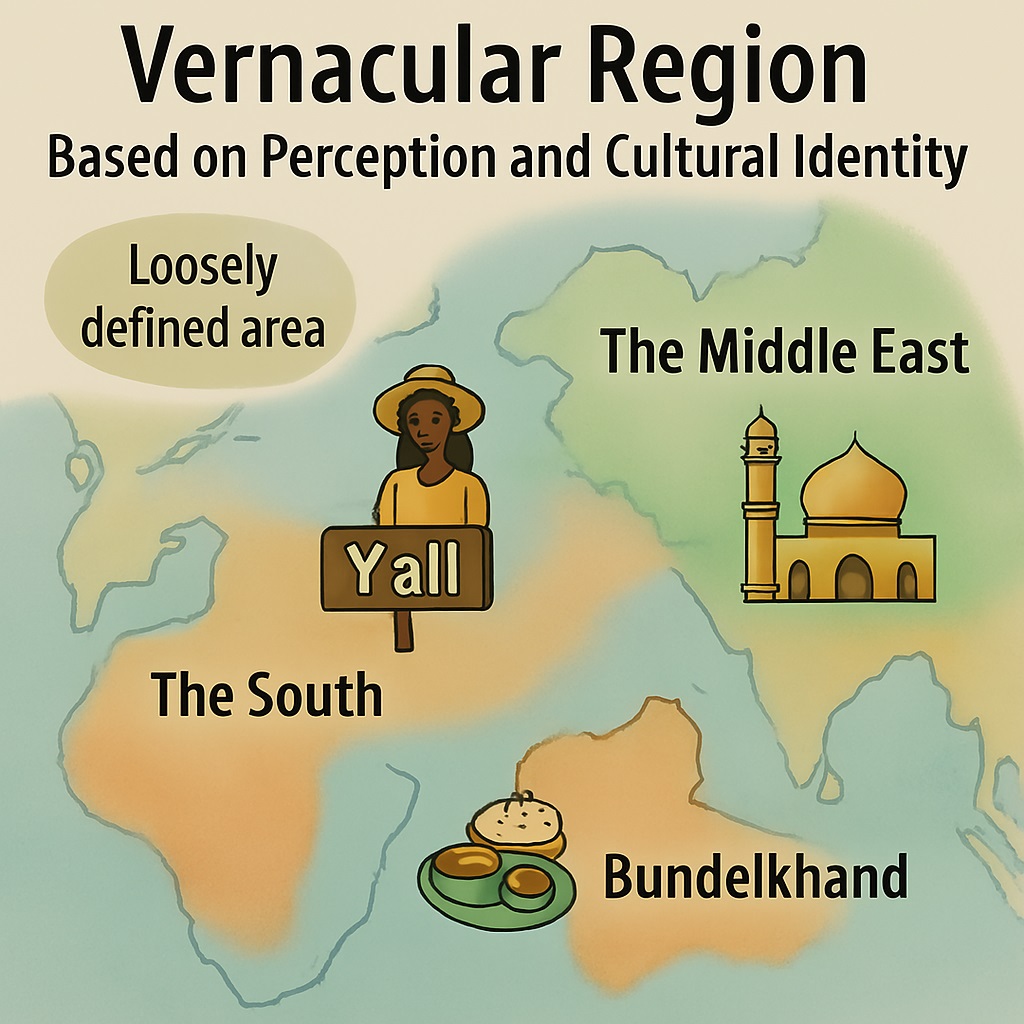A region is a geographic area that is defined by certain characteristics or boundaries. These characteristics can be physical, such as landforms, climate, and natural resources, or cultural, such as language, religion, and political affiliation. Regions can be defined on various scales, ranging from local to global.

Table of Contents
Definition of Region
In geography, a region refers to an area of land that is defined by certain physical, cultural, or administrative characteristics. These characteristics can include topography, climate, vegetation, language, religion, politics, economy, or history.
Regions can be defined at various scales, from local to global, and can be used to study and understand the relationships between different areas and their inhabitants. For example, regions can be used to identify patterns of economic development, cultural diffusion, or environmental degradation.
"A region is an area differentiated from other areas according to some criteria."- Richard Hartshorne
Types of Regions
Regions can be classified into several types, depending on the criteria used to define them. Some of the most common types of regions are:
- Physical Regions: Physical regions are defined based on natural features such as climate, topography, or vegetation. Examples include the tropical rainforest region, the Arctic region, or the desert region.
- Cultural Regions: Cultural regions are defined based on shared cultural characteristics such as language, religion, or ethnicity. Examples include the Spanish-speaking region, the Muslim world, or the African diaspora.
- Economic Regions: Economic regions are defined based on shared economic characteristics such as industry, trade, or resource availability. Examples include the Rust Belt region, the Silicon Valley region, or the oil-producing region.
- Administrative Regions: Administrative regions are defined based on political boundaries such as states, provinces, or countries. Examples include the European Union region, the Canadian region, or the Pacific Northwest region of the United States.
- Historical Regions: Historical regions are defined based on shared historical events or cultural influences. Examples include the former Soviet Bloc region, the Ottoman Empire region, or the ancient Roman Empire region.
Why Geographers use Region?
Geographers use regions as a way to organize and study the complex spatial patterns and relationships that exist on the Earth’s surface. Regions allow geographers to group together areas that share common physical or cultural characteristics, which can be used to identify and analyze spatial patterns and relationships.
There are several reasons why geographers use regions:
- To simplify the complexity of spatial patterns: Regions allow geographers to group together areas with similar characteristics and to study them as a unit, rather than individually.
- To identify and analyze spatial patterns and relationships: Regions can help geographers identify patterns of phenomena such as population distribution, economic development, or cultural diffusion, and analyze the relationships between these patterns.
- To study the interaction between human and physical geography: Regions can be used to study the ways in which human and physical factors interact and shape the characteristics of a particular area.
- To facilitate communication and understanding: Regions provide a common language for geographers to communicate and understand spatial patterns and relationships.
Overall, the use of regions is an important tool for geographers to study and understand the complex spatial patterns and relationships that exist on the Earth’s surface.

Characteristics of Region
Regions in geography can be defined based on a variety of characteristics, depending on the purpose and scope of the analysis. However, some common characteristics of regions include:
- Homogeneity: Regions are often characterized by a degree of homogeneity, meaning that the areas within the region share common physical, cultural, or economic characteristics that distinguish them from neighboring regions.
- Boundary: Regions are typically defined by a boundary that separates them from neighboring areas. The boundary may be physical, such as a mountain range or river, or it may be based on administrative or cultural factors.
- Size: Regions can range in size from small local areas, such as neighborhoods or villages, to larger national or global areas, such as continents or the entire planet.
- Interconnectedness: Regions are often characterized by their interconnectedness, meaning that the areas within the region are connected by transportation networks, trade flows, or cultural exchange.
- Functional interdependence: Regions may also be characterized by functional interdependence, meaning that the areas within the region have economic or social relationships that are mutually beneficial and support the overall functioning of the region.
- Dynamic: Regions are dynamic, meaning that their characteristics can change over time due to natural, social, or economic factors.
- Hierarchy: Regions can be organized into hierarchical levels, with smaller regions nested within larger regions. For example, a neighborhood might be nested within a city, which is nested within a state, which is nested within a country.

Structure of a region
The structure of a region can vary depending on the characteristics of the area being studied, but generally, regions can be structured in several ways:
- Core: The core of a region is the central area that has the highest degree of economic, cultural, or political power within the region. The core is often the most densely populated and developed part of the region.
- Periphery: The periphery of a region is the outer edge that has less economic, cultural, or political power compared to the core. The periphery is often more rural and less developed than the core.
- Transition zone: The transition zone is the area between the core and periphery that has intermediate levels of economic, cultural, or political power. The transition zone can be a buffer or a zone of conflict between the core and periphery.
- Hinterland: The hinterland is the rural area surrounding a city or urban center that provides resources and raw materials to the core. The hinterland is often characterized by agriculture, forestry, or mining.
- Megalopolis: A megalopolis is a region where several large urban areas have grown together to form a continuous urban landscape. Megalopolises are often located in highly populated and industrialized areas.
- Economic corridors: Economic corridors are linear regions that are characterized by high levels of economic activity and transportation infrastructure. Economic corridors can be located along highways, rail lines, or waterways.

Formal Region
A formal region is a type of region that is defined by a specific set of boundaries or criteria. This type of region is also sometimes referred to as a uniform region or a homogeneous region.
Formal regions are often defined based on physical, cultural, or administrative characteristics. For example, a state, province, or country can be considered a formal region because it has a clearly defined boundary and administrative structure. Similarly, a physical region, such as a mountain range or a desert, can also be considered a formal region because it has distinct boundaries based on its physical characteristics.
In a formal region, the characteristics that define the region are generally consistent across the entire area. For example, in a cultural region defined by language, the language spoken is consistent across the region. In a physical region defined by climate, the climate is consistent across the region. In an administrative region defined by political boundaries, the laws and regulations are consistent across the region.
Formal regions are useful for studying patterns and trends within a defined area, as well as for understanding the political, cultural, or physical boundaries that shape the area. However, it is important to note that the characteristics defining a formal region may not necessarily reflect the diversity or complexity of the people, cultures, or environments within the region.

Functional Region
A functional region, also known as a nodal region, is a type of region that is defined by a central point or node and the functional connections that radiate out from that node. The boundaries of a functional region are not always clearly defined and can vary depending on the function or activity being studied.
Functional regions are characterized by the flow of goods, people, or information between the central node and surrounding areas. For example, a city and its surrounding suburbs can be considered a functional region because the suburbs are connected to the central city by transportation networks and share economic, cultural, and social ties with the city.
Another example of a functional region is a transportation network, such as a highway system or a shipping route. The functional region of a transportation network extends along the route of the network, with nodes representing major transportation hubs or terminals.
Functional regions can also be defined based on economic activities, such as trade or production. For example, a region that specializes in agriculture might have a central processing facility that serves as a hub for the distribution of agricultural products to surrounding areas.
Functional regions are useful for understanding the interconnectedness of different areas and the role that central nodes play in shaping the function and development of surrounding areas. However, the boundaries of functional regions are often fluid and can change over time depending on the specific function or activity being studied.

Vernacular region
A vernacular region, also known as a perceptual region, is a type of region that is defined by people’s perceptions, attitudes, and beliefs about a particular place. Vernacular regions are not defined by strict criteria or boundaries, but are instead shaped by people’s subjective experiences and understandings of the area.
Vernacular regions can be defined based on a wide range of characteristics, including cultural, historical, or environmental factors. For example, a region might be defined by a shared dialect or accent, a common belief system, or a unique landscape or natural feature.

Summary
- Regions are an essential concept in geography.
- They provide a framework for understanding the diverse characteristics of different areas of the world.
- Regions can be defined based on physical, cultural, economic, administrative, historical, biogeographic, linguistic, tourism, urban, or rural characteristics.
- Formal regions are defined by clear boundaries and characteristics.
- Functional regions are defined by interactions between different elements of the area.
- Vernacular regions are defined by people’s perceptions and mental maps.
- Historical regions are defined by past events and cultural influences.
- Biogeographic regions are defined by the distribution of plant and animal species.
- Linguistic regions are defined by the languages spoken in the area.
- Regions can be used to analyze and understand the complex interactions between different elements of a particular area.